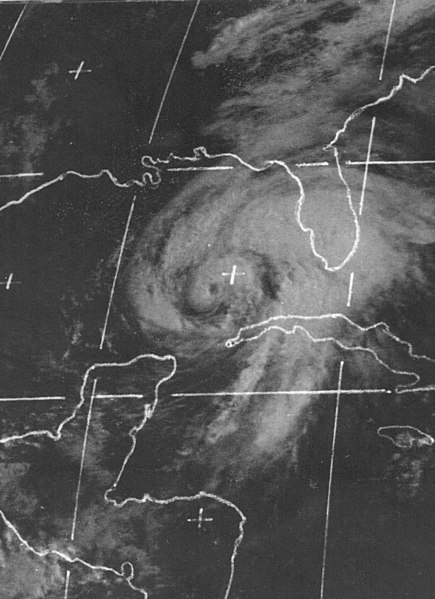Hurricane Agnes was the costliest hurricane to hit the United States at the time, causing an estimated $2.1 billion in damage. The hurricane's death toll was 128. The effects of Agnes were widespread, from the Caribbean to Canada, with much of the east coast of the United States affected. Damage was heaviest in Pennsylvania, where Agnes was the state's wettest tropical cyclone. Due to the significant effects, the name Agnes was retired in the spring of 1973.
Agnes near peak intensity in the Gulf of Mexico on June 18
Remnants of Agnes over northeastern United States
Damage in Key West, Florida, from a tornado spawned by Agnes
Buildings almost fully submerged in Richmond
1972 Atlantic hurricane season
The 1972 Atlantic hurricane season was a significantly below average season, having only seven named storms, four fully tropical storms and three subtropical storms. It officially began on June 1, 1972, and lasted until November 30, 1972. These dates conventionally delimit the period of each year when most tropical cyclones form in the Atlantic basin. The first storm, Subtropical Storm Alpha, developed on May 23 off the Southeast United States and struck Florida, causing minor damage and two fatalities.
1972 Atlantic hurricane season
1972 Atlantic hurricane season
1972 Atlantic hurricane season
1972 Atlantic hurricane season







